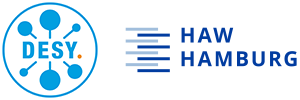ALMABAT: Atomic layer deposition and magnetic structuring for increased current density in batteries
01.01.2025 - 31.12.2025
Robert Blick, DESY
Karl-Ragmar Riemschneider, HAW Hamburg
Florian Rittweger, HAW Hamburg
The major performance indicators of batteries are energy density and current carrying capacity. The latter is a decisive factor for fast charging capability. Charging processes in the range of a few minutes are highly desirable for electric vehicles empowering the transformation from fuel-based vehicles. However, high-current capability is of more importance than energy density for stationary batteries because they are required for grid frequency stabilization of renewable energy sources.
The speed at which the lithium ions incorporate into the material limits the high-current capability within the battery electrodes. By structuring the battery electrodes through a geometrically favourable alignment of particles, the speed of the intercalation process can be significantly increased.
The proposed functionalizing and structuring process requires two steps. First, based on experience of Nano Scientists (CHyN/DESY), the ion-storing electrode material is modified with ultra-thin films and nanoparticles. The method of atomic layer deposition (ALD) in combination with a tailored thermal reduction process will be used to functionalize larger graphite particles of the electrode.
Subsequently, at the Engineering Group (HAW), an aligned structuring of the battery electrode is achieved during the drying process from the slurry phase by applying strong magnetic fields up to 1 Tesla. The aim is to manufacture very compact test batteries with structured electrodes, which will be measured in the HAW battery laboratory. Preliminary developments for this approach were achieved within the previous project MagnoBat. However, the comprehensive battery testing has not yet been feasible within the context of the former project.
Our joined approach will establish a strong link between the field of nanotechnology at the Center for Hybrid Nanostructure (CHyN) - a jointly used research building of UHH and DESY in the Science City Bahrenfeld, and the applied battery research at the HAW. This project proposal fosters mutual understanding and facilitates interdisciplinary exchange. At the same time, it is an opportunity for the dissemination of current fundamental research.

